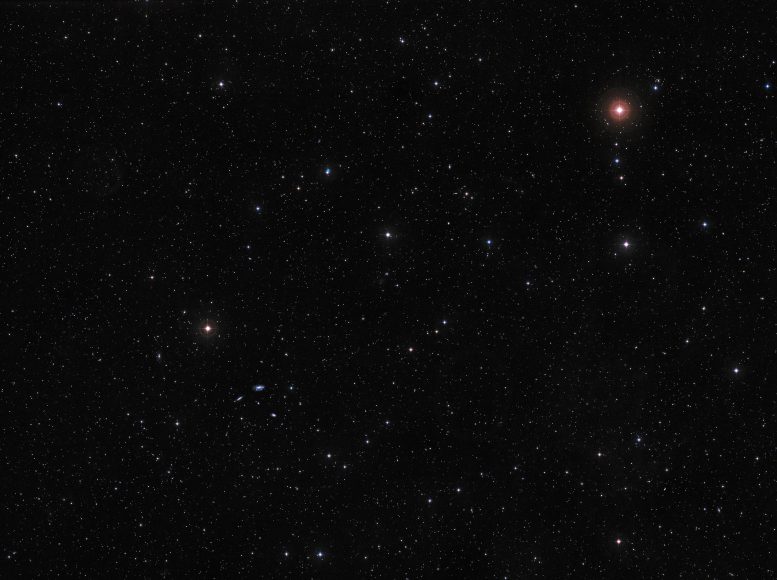
The NASA/ESA Hubble Space Telescope celebrates Halloween this year with a striking observation of the carbon star CW Leonis, which resembles a baleful orange eye glaring from behind a shroud of smoke.
CW Leonis glowers from deep within a thick shroud of dust in this image from the NASA/ESA Hubble Space Telescope. Lying roughly 400 light-years from Earth in the constellation Leo, CW LEonis is a carbon star — a luminous type of red giant star with a carbon-rich atmosphere. The dense clouds of sooty gas and dust engulfing this dying star were created as the outer layers of CW Leonis itself were thrown out into the void.
When small to intermediate-mass stars run out of hydrogen fuel in their cores, the outwards pressure that balances the crush of gravity within their cores falls out of equilibrium, causing the star to start collapsing.[1] As the core collapses, the shell of plasma surrounding the core becomes hot enough to begin fusing hydrogen, generating enough heat to dramatically expand the outer layers of the star and turn it into a bloated red giant. Stars in that phase of life eject huge amounts of gas and dust outwards into space, eventually jettisoning their outer layers. In the case of the carbon star CW Leonis, this process has surrounded the star with a dense pall of sooty dust.

Along with CW Leonis’s smoky veil, the vibrant orange and green tints of this image make it a fitting celebration of Halloween. Hubble has captured a ghoulish gallery of Halloween images over the years — from ghostly faces and cosmic bats to a carved pumpkin formed from binary stars. This year’s image resembles a single, baleful eye of cosmic proportions glaring out from within a cloud of smoke.
While these observations make for a striking image, they were originally made to answer pressing scientific questions about CW Leonis. As the closest carbon star to Earth, CW Leonis gives astronomers the chance to understand the interaction between the star and its surrounding envelope. This is a particularly interesting object to study as the envelope of CW Leonis is relatively turbulent, with a complex inner structure that astronomers believe may be sculpted by a nearby companion star.
The bright beams of light radiating outwards from CW Leonis are one of the most intriguing parts of this image, as they’ve changed in brightness within a 15 year period — an incredibly short span of time in astronomical terms. Astronomers speculate that gaps in the shroud of dust surrounding CW Leonis may allow these beams of starlight to pierce through and illuminate dust further from the star. However, the exact cause of the dramatic changes in their brightness is as yet unexplained.
Detailed Hubble observations of CW Leonis taken over the last two decades also show the expansion of ring-like threads of ejected material around the star — CW Leonis’s sloughed-off outer layers.
This image incorporates observations from 2011 and 2016 by one of Hubble’s workhorse instruments, the Wide Field Camera 3. CW Leonis is brightest in the red filters, R and I, and therefore the simmering orange color pervading the center of the image well represents the real color of the star.
Notes
- Hydrogen-burning stars roughly 0.3–8 times as massive as the Sun will eventually become red giants, but stars that begin outwith this mass range will evolve differently, the less massive ones never reaching the red giant stage and the more massive ones becoming incredibly luminous supergiants.
More information
The Hubble Space Telescope is a project of international cooperation between ESA and NASA.
These images were taken as part of the Hubble Observing Programmes #12205 and #14501.
Never miss a breakthrough: Join the SciTechDaily newsletter.